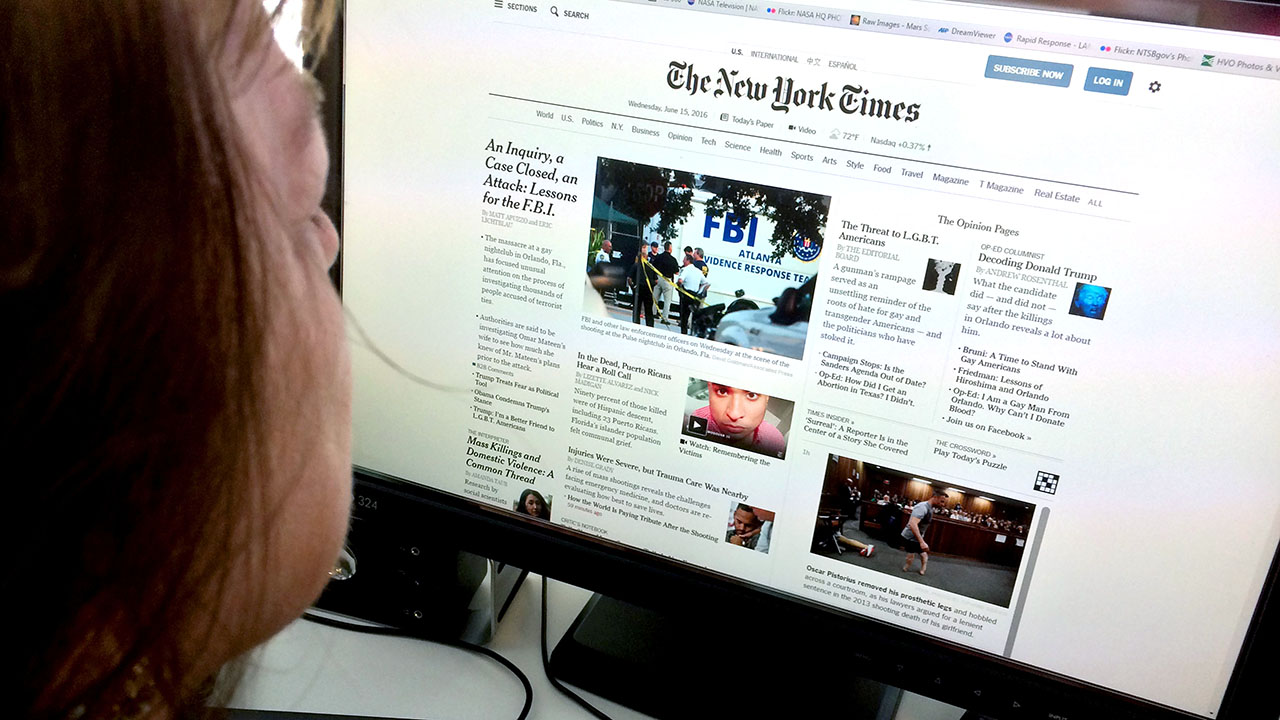Popular News Fundamentals Explained
Popular News Fundamentals Explained
Blog Article
Some Known Details About Popular News
Table of ContentsNot known Facts About Popular NewsIndicators on Popular News You Need To KnowAll About Popular NewsThe Single Strategy To Use For Popular News
Age is additionally a factor in the means individuals check out the duty of social networks. Younger social media news consumers are most likely to claim it has influenced their discovering right. Regarding fifty percent of social networks news customers ages 18 to 29 (48%) say information on social media sites makes them much better informed, compared to 37% of those 30 to 49, 28% of those 50 to 64, and 27% of those 65 and older.Journalists weigh information values when determining whether to cover an event or news. Here are the values that we think about when establishing an outreach approach. Arguably one of the most crucial element of newsworthiness is whether the information item being communicated effects an information outlet's audience. Let's picture scientists have actually located a cost-effective solution to a typical issue.
Proximity is crucial. Journalists have an interest in points that affect their neighborhoods. Research on a state's new tax obligation code most likely won't produce the same passion throughout state borders. Sometimes specialists can help localize a bigger national story that impacts more than just a city or state. In these situations, it is essential to be looking for opportunities where topic experts can give insight or where similar projects might be happening in your area.
If you are publishing newsworthy research, loop in MarComm prior to the short article being released to make sure that the pitch can highlight the most recent aspect of the tale: the magazine of the study. Events and announcements that entail high-profile numbers are more probable to create media insurance coverage. Visits from national numbers frequently require months of preparation because of expected community rate of interest.
Our Popular News Statements
Stories often include some type of dispute. Necessarily, these stories are usually controversial to some level. Luckily, university staff and faculty are normally perceived as neutral professionals. We can assist alleviate prospective reputational risk with these stories while likewise raising the chances of generating protection. While a lot of the above information values are interwoven, human rate of interest tales typically stand apart.
Human interest components can add information worth to other stories that may show up to be doing not have in the other values. The novelty or peculiarity of a circumstance can help influence whether an information outlet is most likely to cover a story. While this is not an extensive listing, checking to see if your story or event has these qualities before contacting us will certainly help you identify which aspects hold one of the most news value.

Some Known Facts About Popular News.
There is additionally significant evidence that more customers can start to pay for information in the futureif authors can comprehend them and serve them well. Half of those who do not pay for information actively look for news and resemble clients in various ways. And nearly 2 in 10 of those that don't subscribe to news currently indicate they are inclined to begin to pay in the future.
We then ask a collection of questions to identify whether individuals spend for particular sorts of news resources (Popular News). We asked people to name the resources they make use of most oftenwhether they pay for them or nothow they use them, the specific points they consider essential concerning them, and some related concerns regarding the cost and value of that source
Individuals are drawn to information generally for 2 reasons over others: A wish to be notified citizens (newspaper clients in certain are highly inspired by this) and because the publication have a peek here they register for excels at covering particular topics regarding which those customers particularly care. While there are a host of factors, the No.
Greater than 4 in 10 likewise mention the reality that family and friends register for the exact same item (Popular News). Greater than a 3rd of people claim they originally subscribed in feedback to a price cut or promotion. In print, individuals likewise are relocated greatly to subscribe to obtain coupons that save them money, something that has untapped effects in digital
The Ultimate Guide To Popular News
About half are "news seekers," implying they actively choose information instead of primarily running into it in a more easy means, though the news that nonpayers are seeking (for now, at the very least) is typically about national politics. Like customers, a number of these individuals additionally obtain information multiple times a day, utilize the news in methods similar to clients, and want similar topics, including foreign or worldwide news.

Of those who do pay, 54 percent register for newspapers in print or electronically, which stands for 29 percent of Americans on the whole. Most of them acquire look at here now a print magazine in addition to their paper and spend for 2 to four news sources in total, some much more. And while 53 percent are long-time clients (5+ years), more than a quarter (27 percent) have bought their paper membership within the past year.
Few print customers assume it likely they will switch to a digital-only registration in the future, and majority of those that favor digital have never ever paid for a print variation of the very same source. Totally 75 percent of paper payers say they mainly read the paper in print, while 21 percent are mostly digital individuals, and 4 percent explain themselves as evenly divided.
Report this page